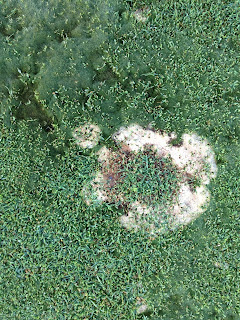July 31, 2013
Here is a news release from Iowa State on tomorrow's field day.
Iowa
State University
College
of Agriculture and Life Sciences
7/24/13
Contacts:
Nick Christians, Horticulture, (515) 294-0036, nchris@iastate.edu
Ed Adcock, Agriculture and Life Sciences Communications Service, (515) 294-2314, edadcock@iastate.edu
Aug. 1 Field Day Brings Turfgrass Specialists to Iowa State University Research Station
AMES, Iowa — Turfgrass specialists who work with golf courses, athletic fields and lawn care services will meet at 8 a.m. Aug. 1 for an annual field day at the Iowa State University Horticulture Research Station.
Faculty and staff from Iowa State departments of horticulture, agronomy, entomology and natural resource ecology and management will present informational sessions along with speakers from the Iowa Department of Agriculture and Land Stewardship and Indian Hills Community College. Topics include pond management, pesticide application, weed management and turfgrass insect, weed and disease identification.
The field day includes a Pesticide Applicator Training session to meet requirements for applying pesticides. Suppliers of turfgrass products will exhibit at the field day.
Registration information is available at www.iowaturfgrass.org. The Horticulture Research Station is located at 55519 170th St., Ames, which is three miles north of Ames on Highway 69, and east on 170th Street about 1.5 miles.
Iowa State sponsors the field day with the Iowa Turfgrass Institute, the Iowa Golf Course Superintendents Association, Iowa Sports Turf Managers Association and the Iowa Professional Lawn Care Association.
##
On the Web: This and all other Iowa State University College of Agriculture and Life Sciences news releases and related photos are available at http://www.cals.iastate.edu/news/
















